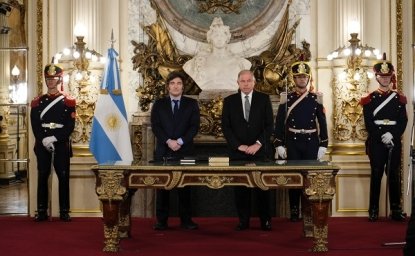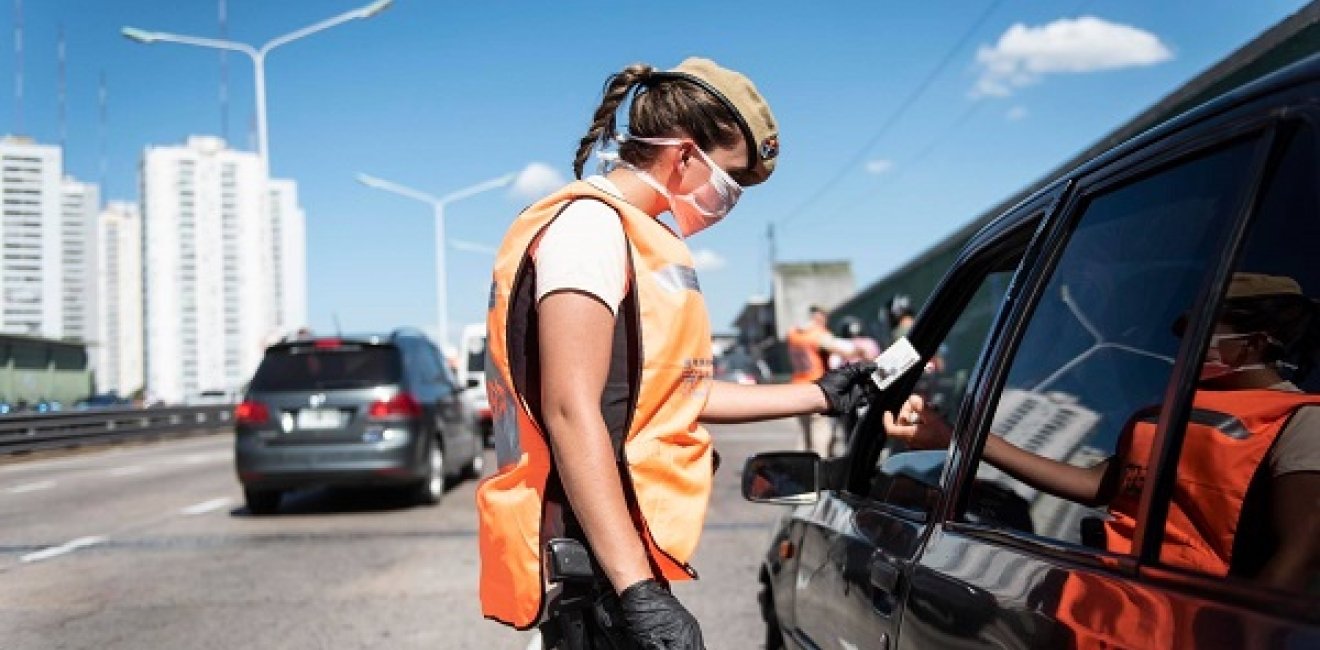
A blog of the Latin America Program
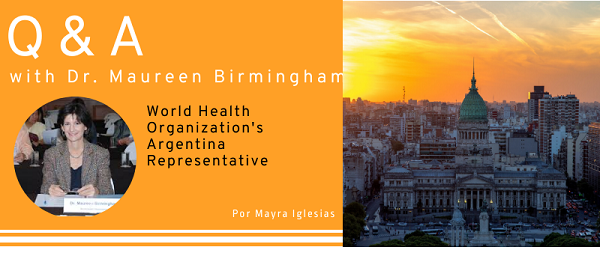
Q: Argentina has registered the majority of its COVID-19 cases in and around Buenos Aires, where almost half of Argentina’s 44 million people live. Poverty was already high in that region, and the latest economic crisis and quarantine could push the poverty rate to 50 percent. That is raising concerns about the ability of authorities to control the outbreak. Recently, the first cases were detected in Villa 31, a densely populated informal neighborhood in the center of the city. Given the difficulty implementing social distancing in communities such as Villa 31, how can the government avoid a rapid spread of the coronavirus that could undermine progress achieved through the economically costly quarantine?
A: The main recommendations to contain the virus are the early detection of cases, their isolation and treatment, and proactive follow-up and quarantine of their contacts, combined with physical distancing strategies. To do this successfully, good communication and community engagement is key and may require the involvement of local opinion leaders who are trusted by the community, especially those in situations of vulnerability, such as people living in slums, migrant communities and indigenous populations. Moving swiftly to intensify social protection measures to ease the socio-economic hardship caused by the pandemic and its containment measures is also a critical measure to prevent social tension.
It is also important to be practical in adapting measures to the local context. For example, hand hygiene in certain settings may be difficult if there is insufficient availability of water. The government authorities need to address this rapidly to avoid further contagion. Isolation of mild cases may also be difficult in crowded settings, but can be overcome by providing comfortable accommodations and care for infected individuals with mild symptoms until they are no longer contagious. These are the measures being undertaken by the government and have been shown to be successful in other countries to level the curve and then drive it down.
Q: Argentina’s multiyear recession left the government with scarce resources to fund its healthcare system. Though every citizen has the right to access public health services, the availability of hospitals and doctors is unequally distributed. For example, 70 percent of the country’s 8,444 hospital beds are in private medical facilities. Does this fragmented system threaten the country’s response to COVID-19? In addressing this pandemic, does the government have an opportunity to address structural challenges in its health sector?
A: Indeed, the highly fragmented and segmented health system in Argentina clearly affects the ability of the system to respond efficiently and effectively to the pandemic, despite the excellent training, considerable capacity and extraordinary commitment of health professionals in Argentina.
More importantly, this pandemic has laid bare the need in every country for strong government leadership and governance to ensure universal access to quality health services without incurring financial hardship. Argentina is no exception to this, and the fragmented and segmented structure of its health system makes this even more challenging, but not impossible. The pandemic has also demonstrated major opportunities to further expand telemedicine as an important tool to ensure universal access to essential health services and the absolute importance of strong primary health care. Those countries that have a health care model based on solid primary health care working within an integrated network with other health services have fared better and shown more resilience.
As you suggest, this all requires investment in and excellent planning for the needed human resources for health, as well as collaboration with the education sector to ensure training of health professionals according to the health needs of the country, and strategies to ensure their appropriate distribution. It also requires collaboration with the labor sector to ensure decent work conditions. In 2017, the countries of this region, including Argentina, agreed on a strategy to address these huge challenges related to human resources for health. Without well trained and well distributed human resources for health that respond to the actual health needs of the population, it will be difficult to advance further towards universal health, or have the resiliency to confront the next pandemic or other health emergencies.
Furthermore, regardless of the economic situation of a country, the World Health Organization and Pan American Health Organization strongly believe that the decision of a government to invest in the health of its people is largely a political one. In this region, government investment in health over the past few decades has been a much lower priority than, for example, economic growth. This chronic under-investment has been exposed by the pandemic, which has demonstrated very clearly and painfully the direct link between health and the economy. Hopefully, the lessons learned from this pandemic will stimulate sufficient reform and investment in health systems that provide access to quality health services for all while protecting against financial hardship due to a health problem. This is an important form of social protection as well as an investment in people, in a healthy workforce, in a productive population and in a strong, resilient economy that can withstand future shocks.
In addition, the pandemic has exposed the importance of essential public health functions such as surveillance, laboratory capacity and contact tracing. This has also been an area of chronic under-investment by most governments in the region, despite being relatively low cost and highly cost-effective. These public health functions are key to detect where the virus is circulating and to contain it. I am talking about “boots on the ground” – sufficient numbers of trained personal who work on emergency preparedness and rapid response and who can, for example, be rapidly mobilized for case detection and isolation, as well as contact tracing and quarantine. I am talking about a strong network of public health laboratories in the country that have the resources, equipment and personnel to rapidly confirm what is happening. I am talking about trained and sustained capacities to identify risks and reduce them, as well as preparedness to rapidly scale up to confront a threat. It is time to get more serious about investing in a sustainable way in these essential public health functions to manage public health risks. This is not just a “cost,” it is a cost-effective, smart investment in the health security of the country, since we know that health emergencies will continue to occur.
Q: President Alberto Fernández declared a mandatory quarantine at a very early stage of the virus’s spread. He has been praised for his decision at home and abroad, and compliance appears high; United Nations Development Program data shows there has been a 55 percent decline in overall movement in the country. Have Argentina’s aggressive social distancing measures been effective? As several provinces begin to relax their quarantines for designated sectors, what should be done to make sure efforts to prevent contagion are not undermined?
A: Indeed, the Argentine government at the highest political levels decided to take an all-of-government, all-of society approach, and acted quickly and decisively following WHO/PAHO recommendations. It also took lessons from the experiences of other countries where the virus had been successfully contained and where it had exploded out of control. It was therefore ready to act when the first imported cases were detected, to isolate, test and treat them, while tracing and quarantining contacts. These rapid actions within the first few weeks are key to prevent a rapid escalation of cases that might overwhelm the health system. These actions also help flatten the curve, reduce the overall number of cases and buy time to better prepare the system to cope with a rise in cases, which in turn reduces mortality.
The Argentine government took the next difficult decisions to implement social distancing measures. And it decided on the strictest level of social distancing, which is movement restrictions, border closures and the quarantine of the population. This clearly helped to level the curve and save lives, but as in every country, it is having a huge socio-economic toll. What is remarkable in Argentina is the very high community engagement by the population to comply with these measures. I believe this was possibly due to a few factors: 1. Strong leadership by the president, coupled with a consultative process with public health experts, the business sector, trade unions, governors, the political opposition and opinion leaders; 2. Implementing evidence-based measures based on WHO/PAHO recommendations; 3. Excellent communication with clear and unified messages; 4. Increasing social protection measures to help the population cope, especially those in vulnerable situations; and, 5. Using an adaptive strategy. By this last factor, I mean, “learning as you go” about what works and doesn’t work in the Argentine context, learning from mistakes and adjusting constantly to the serious collateral consequences of the measures. In fact, in WHO’s updated Strategic Preparedness and Response Plan to COVID-19, three characteristics were cited as factors for success in containing COVID-19: speed, scale and equity. I believe these characteristics are part of the Argentine response.
What is important now in Argentina is to drive the curve down. This hasn’t happened yet, but can be achieved by “doubling down” on the basic WHO/PAHO-recommended public health measures of early detection, isolation, treatment of cases and proactive contact tracing and quarantine. This is important to do everywhere, but can be highly challenging in vulnerable populations such as those living in crowded slums or in assisted living centers for seniors, as well as in “closed” settings such as prisons and psychiatric hospitals. Nevertheless, these public health measures are key to driving down the epidemic curve and must be done extremely well to successfully relax the quarantine measures and gradually open the economy to a “new normal.” Argentina is at a critical juncture, and hopefully can continue scaling up and intensifying these activities.
Based on evidence and country experience, WHO recommends relaxing social distancing measures in a careful and calibrated way if the following six criteria are met: 1. The transmission is controlled; 2. The health system has the capacity to rapidly detect, test, isolate and treat each case and trace and quarantine each contact; 3. The risks of outbreaks in health centers have been minimized; 4. Preventive measures have been applied in social settings, such as workplaces and schools; 5. Case import risks can be managed; and 6) Communities are fully informed, committed and empowered to adjust to this new norm. Argentina is clearly taking these recommendations into account in its adaptive strategies and decision-making.
Q: In addition to COVID-19, Argentine health authorities are facing another deadly virus, dengue. In the first three months of the year, Argentina recorded five times as many cases as in 2019, with an alarming spread in Greater Buenos Aires. Are you concerned about the burdens of addressing both diseases simultaneously? In addition to siphoning resources from efforts to combat dengue, is there a risk that policy measures to address COVID-19 could complicate the battle against dengue? How is the World Health Organization helping?
A: In fact, Argentina is facing two other outbreaks: measles and dengue. This underscores the importance and challenge of continuing to provide essential services and managing other public health and social problems to avoid having a “shadow pandemic.” These include measures to control dengue, which is epidemic in the region. It includes measures to confront the rise of gender-based violence during the pandemic. It includes continuation of other essential services, such as vaccination, maternal and child health, sexual and reproductive health services, and the continued treatment and care of chronic conditions such as hypertension, diabetes, HIV and tuberculosis.
WHO/PAHO is involved in each of these areas in reminding governments of the importance of continuing essential services, providing alerts of other health risks, offering policy advice, encouraging regional integration to face challenges together in a coordinated way, mobilizing resources, facilitating information sharing among countries regarding best practices and lessons learned, monitoring and evaluation, developing local, contextualized guidance based on WHO/PAHO recommendations, as well as supporting, encouraging and coordinating research to close critical knowledge gaps. WHO/PAHO is also supporting government efforts in risk communications, acquiring needed medicines, vaccines and laboratory diagnostics, as well as building long-term capacity in all aspects of risk reduction, preparedness and response to public health emergencies, in line with countries’ obligations to comply with the International Health Regulations.
Author


Argentina Project
The Argentina Project is the premier institution for policy-relevant research on politics and economics in Argentina. Read more


Latin America Program
The Wilson Center’s prestigious Latin America Program provides non-partisan expertise to a broad community of decision makers in the United States and Latin America on critical policy issues facing the Hemisphere. The Program provides insightful and actionable research for policymakers, private sector leaders, journalists, and public intellectuals in the United States and Latin America. To bridge the gap between scholarship and policy action, it fosters new inquiry, sponsors high-level public and private meetings among multiple stakeholders, and explores policy options to improve outcomes for citizens throughout the Americas. Drawing on the Wilson Center’s strength as the nation’s key non-partisan policy forum, the Program serves as a trusted source of analysis and a vital point of contact between the worlds of scholarship and action. Read more

Explore More in Weekly Asado
Browse Weekly Asado
¿Qué Vemos Hoy?
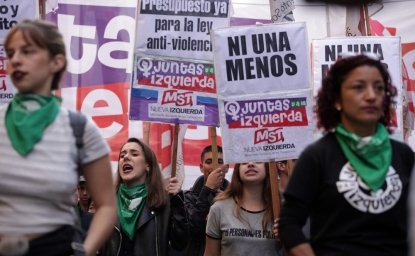
Uphill Battle for Argentina’s Feminists
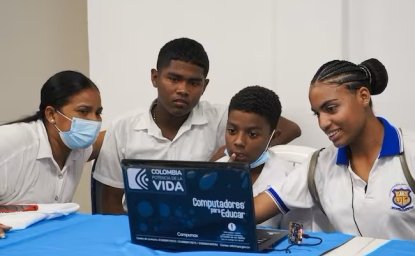
ColombIA
